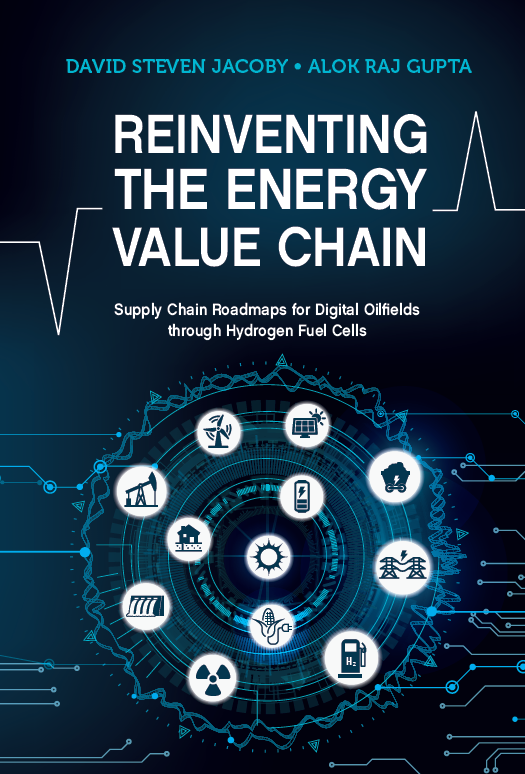
In 1944 Claude Shannon developed mathematical principles and formulas for breaking down information into bits and bytes and reassembling it in a different time and place, which made modern telecommunications possible and became the basis for computing, the Internet, and mobile phones.
In 1956 Malcolm McLean invented containerized shipping. For thousands of years before that, dockworkers had manually loaded and unloaded individual pieces of cargo from the ships. Containerization cut the cost of loading and unloading ships by more than 97%, which started a shipping revolution that enabled a tenfold explosion of global trade over the next 60 years.
Today, the energy industry is at the cusp of such a turning point. Until today oil, gas and electricity has been produced in massive, centralized plants, with a vast and capital-intensive infrastructure involving a continuous flow of supertankers to transport oil to refineries and gasoline to your car, trainloads to carry coal to power plants, and transmission and distribution stations, towers, and lines to carry electricity to your house. But renewables – especially solar, hydrogen fuel cells, and energy storage – can be produced and used at small as well as large scale, with far less infrastructure and capital.
In a future scenario there will be no need to plug small consumer products like electronics and mobile phones into wall outlets because they will be powered by solar receptors embedded internally or in personal accessories such as handbags, or even in your clothing. Home appliances and lighting will be powered by solar receptors embedded in your sidewalk, roof, or clapboard. Home and commercial utilities such as heating and air conditioning systems will be fueled by hydrogen, which could be purchased in small containers, or piped in like natural gas is today. The components for some of this will be small: nano-solar modules, embedded solar crystals, fuel cells, batteries, and canisters of hydrogen, to name a few.
In this scenario the supply chain of coal to electricity generating utility, and transmission lines to every house or office, will no longer be needed. To the extent that cars and dishwashers and TVs will be powered by fuel cells, the automobile could potentially be the source of fuel source for all of them, eliminating the need for gas and electric connections to the house. And since fuel cells, batteries, and solar modules can be made in any size and shape, the number of sizes shapes and sizes will make more applications feasible than ever before, expanding the availability of energy for small scale use, and thereby expanding the conceivable range of powered devices we use. Demand will be driven by cheaper, more adaptive, supply economics – not the other way around.
Energy companies that innovate and customize their products to build these new energy value chains will gain access to vast and fast-growing new markets. Those with central production and capital-intensive distribution infrastructure will need to find ways to cut costs faster than before, and they will need to find creative ways to innovate products and processes, and customize oil, gas, coal, and electricity, or their channels and modalities of distribution, to provide flexible power on a small scale, in order to maintain market share.
Boston Strategies International’s Value Chain Roadmap® shows how companies in energy can create billions of dollars of additional shareholder value by exploiting principles of supply chain innovation and customization. Read our new book, which describes the framework and provides optimal supply chain roadmaps for twelve energy technologies. It’s called “Reinventing the Energy Value Chain: Cleaner, Greener, Smarter – Supply Chain Roadmaps for Digital Oil Fields through Hydrogen Fuel Cells” by David Steven Jacoby and Alok Raj Gupta.
